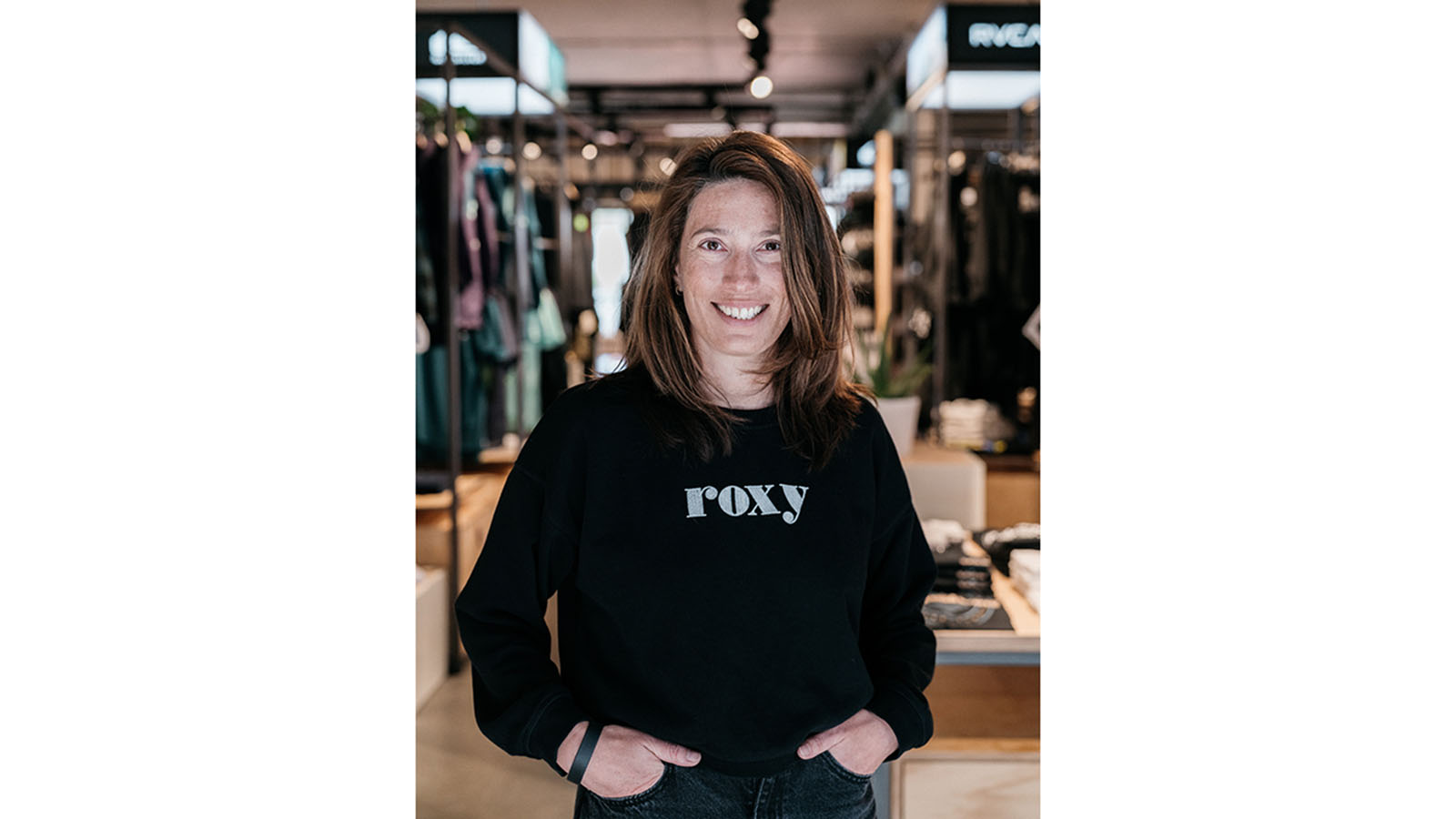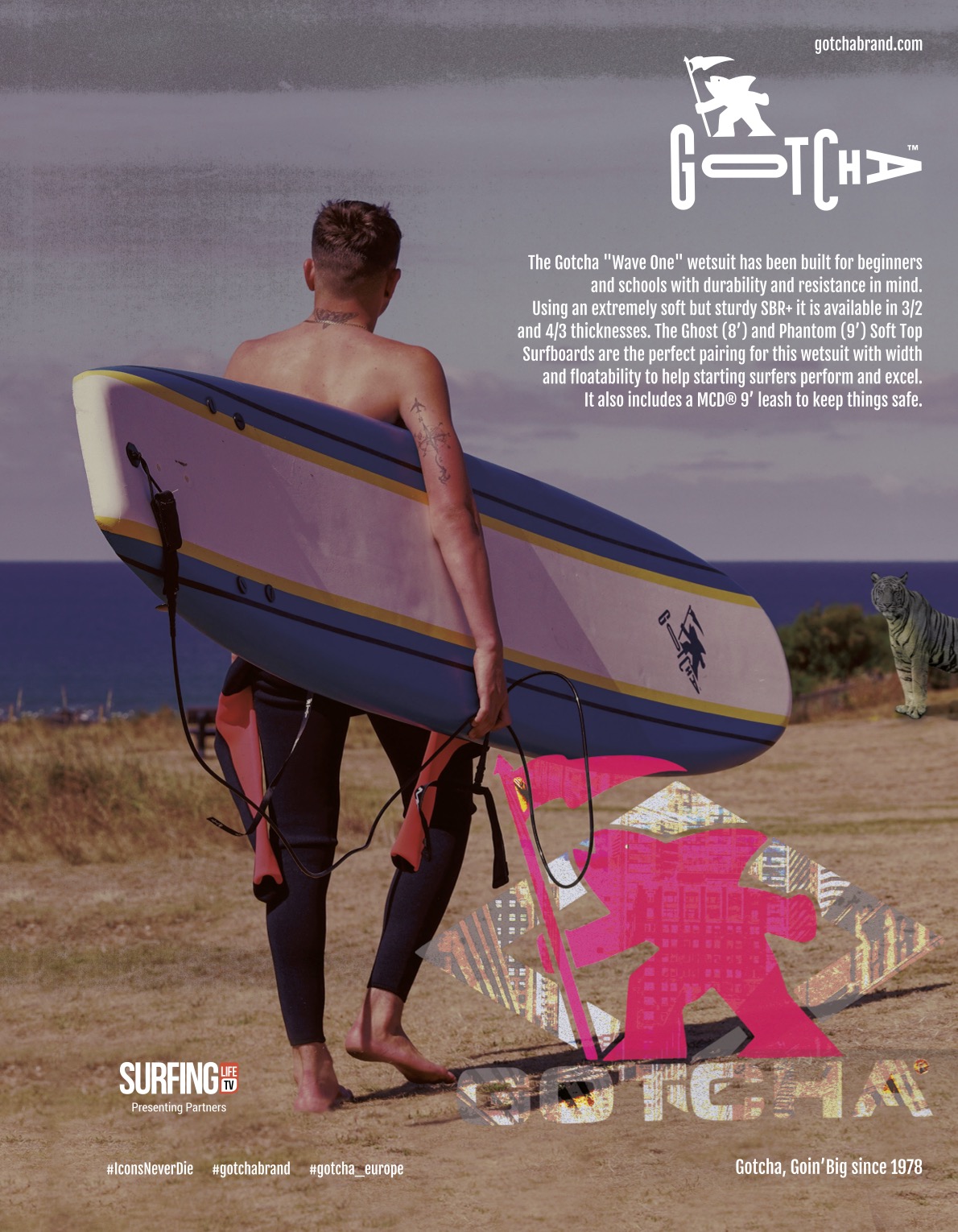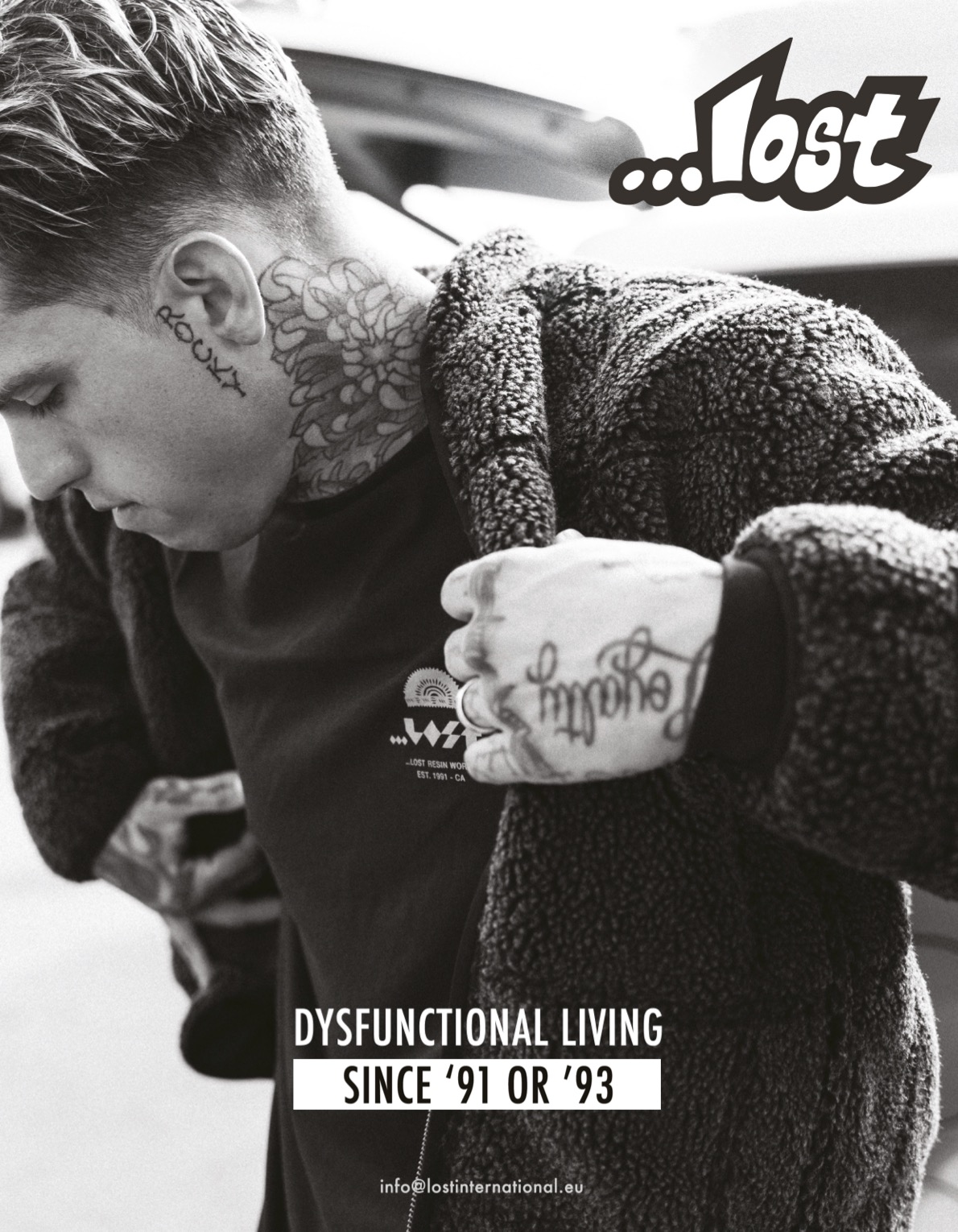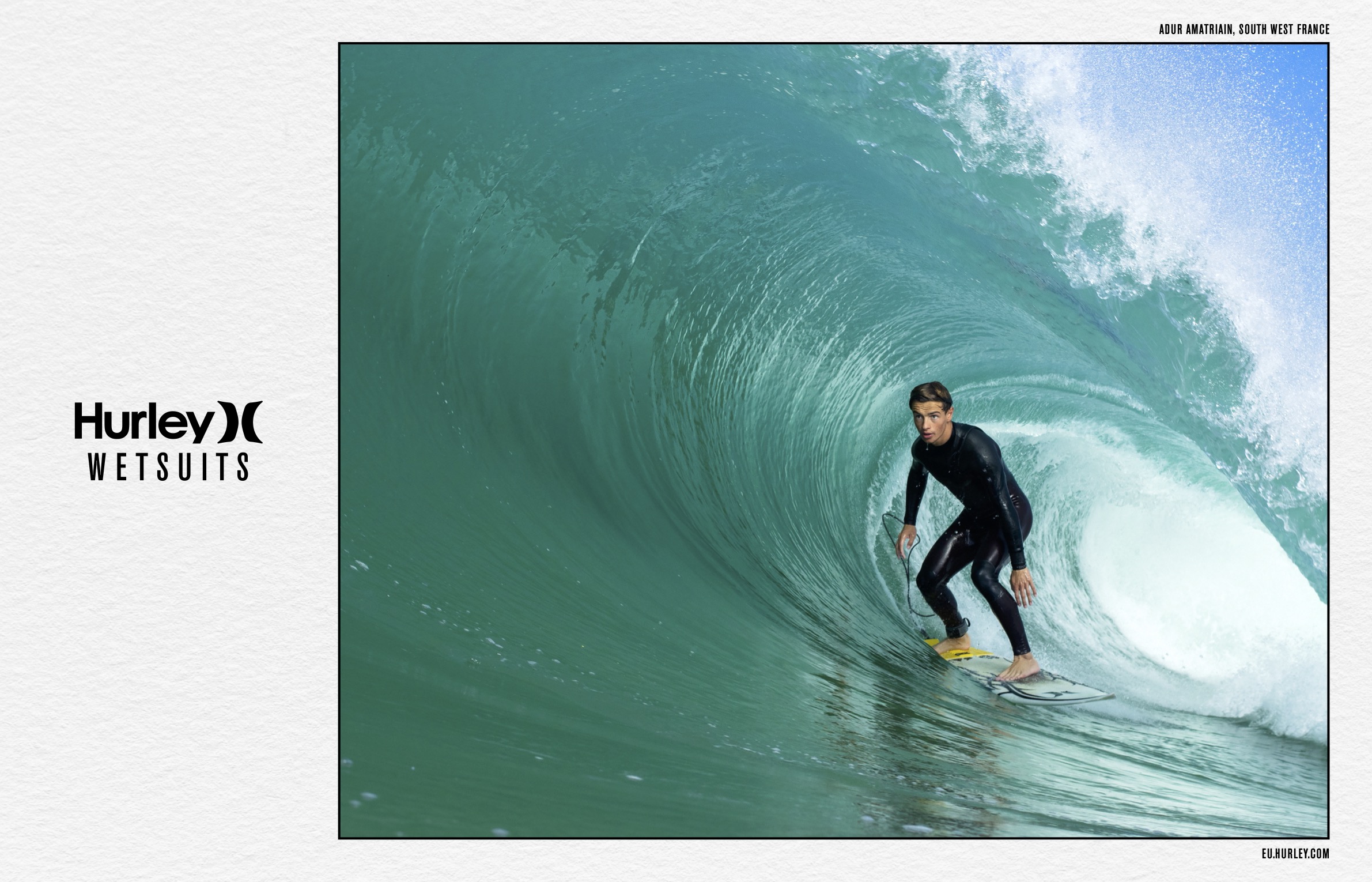
Big Wig: Emilie Souvras, Roxy General Manager
In the final of a series of 3 interviews with the key personalities behind the Roxy brand, we talk to Emilie Souvras, Roxy General Manager.
In March 2020 Emilie Souvras, one of action sports finest leading women, featured in our Big Interview for our 100th issue. We sat down again with the ROXY General Manager to talk about what sets ROXY apart from other brands today, the change, in consumer attitude and todays ROXY girl. Find out how the brand supports women through every moment of their life and what Emilie defines as the biggest challenges currently facing the action sports industry.
In our last interview you were talking about a shift in target demographic. Please tell us about todays ROXY consumer. Who is the target now?
Last year we made another consumer survey. Now that we are a bigger company with Billabong, RVCA and Element, we wanted to understand how we could better position each of the brands. The survey made us realise that age doesn’t really matter. So we don’t care how old a person is. She can be 15, 20, 30, 35. It’s not really what matters. What really matters is the lifestyle, the attitude and the attributes. So we don’t really segment or target or position our brand with demographics anymore. We really focus on consumer attitudes.
What’s the typical Roxy girl like?
Our girls are not only surfers, they are active women. Of course, we have a bunch of athletes who are really seeking to perform, but most of the girls want to surf and enjoy it. They surf for their well being and for the pleasure of being in the water. It is the same with the snow category. We do have girls who compete, but the true Roxy girl is not that much about performance and improvements. It is more about doing the sport with your friends and being outside, so our girls are very active when they travel, they like to stay in shape and to feel good. They run, they practice yoga, they do everything. So we are truly a sport brand supporting active women in many activities. We definitely have a very strong heritage around the ocean and the mountains but our girl‘s are not single sport practitioners. The Roxy girl is involved in multiple activities and that’s why she enjoys living her life. And I think this is pretty unique to Roxy.
How important is the outdoor/fitness/yoga market for you?
Active wear is the umbrella for all the activities that are not surf/snow related. It could be yoga, running, stretching, hiking or even swimming. The pillars of the brand are surf and snow but active is very important for our strategy. This is not only a good market opportunity, but we do feel we have credibility because our girls are athletes, they have to train to perform at the level they are and we see that more and more women want to stay in shape, especially after COVID. I think everybody realizes how important it is to take care of your body, of your health. So we definitely think it’s important for us to develop this active strategy even further.
You did the last SOURCE interview during ISPO 2020 just before Covid hit Europe. What changes have you had to make in response to the pandemic that you are keeping?
We became a lot more agile in the way we do things, eg the photoshoots, for instance, because we had to rely a lot more on regional people, local contacts and so on. I think that’s a great thing that we are going to continue to leverage because we created great networks in different countries. That is very positive. Also the ability to work from anywhere, thanks to digital tools, to work from home or to work from many different places. I don’t think I will ever travel as often as I was traveling before. We definitely need to keep some travel to maintain the relationships, but we don’t need to travel as often as we used to before Covid.
From a production standpoint we are looking into opportunities to produce closer to the market. But it’s not that simple. It’s more a long-term strategy, because many, many brands want to make the same shift but the production capabilities and capacities are not that big. It’s easy to make T-shirts or Fleece tops, but it’s different with technical products, for example for the snow category or wetsuits and bags. Those facilities don’t exist in Europe. We are very open to look at any options that exist here. So a few categories are easier to produce locally, but we also produce for every region. So producing locally is a good solution for the European business. But many of our products are sold in America, Australia, Taiwan, and in Japan. We need to find the right balance.
What marketing initiatives did you have running this summer?
We released our big marketing activity ‘Oh my God’, the 2nd chapter of ‘Welcome To The New Cute’ campaign, and we are super happy with that. The response from the consumer has been really good. It’s different to what other brands can do, because it’s really not a product campaign or a collection campaign. It’s a brand campaign to celebrate the power of women. That’s pretty unique and it’s doing great. We had the the G-Land contests and a bunch of local activations in different places.
Another big brand moment for this year was actually the ‘On the beach’ campaign. The first one was released in 2020, it is our swim campaign around themes like body diversity and inclusivity. We also have something important that’s more Europe specific. It’s the collab we have with Italian designer Stella Jean. We were so happy to be able to partner with another woman designer because for us, those collaboration are the ones that are making the most sense. So we had Cynthia Rowley last winter and now Stella Jean (find out more about the Stella Jean x Roxy collab in the interview with Roxy designer, Stephanie Micci.)
Please explain the message behind the ‘Oh, my God‘ campaign.
We really want to celebrate women and to show that we support women in every moment of their life. Of course when they are competing, but not only then. We want to show real women and real moments in the life of these amazing women that we are so lucky to have as ambassadors and that are part of the Roxy family. To show the reality of being a top performer, athlete, surfer, snowboarder, what challenges those girls are facing. I think it’s super important to be authentic and to show those authentic moments as much as we could. That’s the main objective.
How was the feedback of controversial scenes in the campaign like Kelia Moniz surfing pregnant or Torah Bright breastfeeding her baby?
We got pretty much only positive feedback, like 95%. And it’s not the first time that we are showcasing our girls pregnant or breastfeeding. When Kelia was pregnant in Summer 2020, we did a campaign with her. And it was great to see all the positive feedback we got from the consumer. But also from our athletes and non-Roxy athletes. They were super impressed to see a brand not being afraid to celebrate and to showcase a woman being pregnant. Because we’ve seen some other athletes, when they got pregnant, they were kicked out by the sponsor and they were so upset. We’ve even been congratulated by Alana Blanchard. But when the brand started in the 90s, Lisa Andersen was our very first Roxy athlete and when she had a baby Roxy supported her through the pregnancy. She’s still a Roxy ambassador after all those years and two kids. So it’s not something that new to us as we’ve always supported women through their journey and their lives.
Did you feel the impact from the “rise” of the action sports/outdoor category in the wake of Covid? How is the impact on apparel and soft goods?
Less, and definitely less for apparel and soft goods. But it was also very different from one region to another. In key areas like the Basque Country or Les Landes or in Ericeira in Portugal, everything was on fire because people were traveling to the destinations. But in countries like Germany or the Czech Republic for instance it was, of course, a lot more challenging. In those countries, we haven’t seen that rise over there. They are coming here [to France], so it’s helping the business in some areas, but the business over there is a lot more challenging. We haven’t seen the same bounce back in every region and in some of the other countries outside of Europe. When Hawaii reopened, it was like crazy because everybody wanted to travel there. It benefited a lot of lifestyle categories as well. So it really depends on where people are going on vacation. But online, our lifestyle business has been pretty healthy overall.
The action sports industry benefited a lot from Covid and all the outdoor brands as well. Not only action sports, all the brands that are outdoors and that are offering products for consumers to be outdoor and to enjoy outdoor activities, whether it’s fishing, camping, people want to be outside. So it definitely benefited our industry and the Roxy brand.
What’s the best performing category overall for you?
It varies a lot by region, of course we have regions where snow is not existing. If you consider even Australia, we have a very small snow market and of course in Brazil, Indonesia, we don’t do snow at all. But in Europe, snow is super important, and in Japan as well. In the US, snow is really on fire, especially now that snowboarder Chloe Kim is part of the Roxy family. It really created an even bigger momentum for the Roxy snow category. So snow has been very strong for us in many countries, but not everywhere. Of course it is super seasonal. But swim is also doing very well everywhere. The beginning of the brand was about swim and boardshorts. We’ve been pretty pleased with the results we can see across all regions. And lifestyle of course, is more important in countries where we don’t have any mountains or ocean.
What do you think are the biggest challenges and threats for the action sports industry right now?
I see more opportunities than challenges and threats. A few years ago, we’ve saw fast fashion with all those brands coming strongly into our space. I think the arena is definitely changing. Consumers are more and more looking for authenticity, better quality and so on. So I see definitely more opportunities than threats. But the supply chain is so disruptive at the moment. It’s going to be very hard to really develop at the level we can be until the supply chain gets better. But it’s mainly logistics and transportation. It’s crazy. Inflation is definitely a risk concern. How far is it going to go? That’s really unknown. So a lot of uncertainty that could become a risk. But I want to be optimistic. There is some challenges, of course, with the supply chain, as I said, but I’m pretty optimistic. I think the momentum is great, trends are good.









